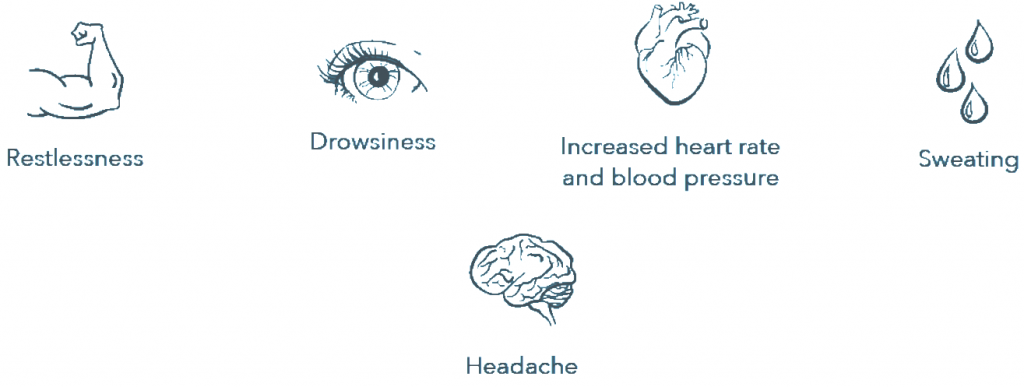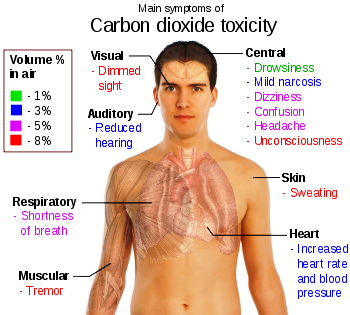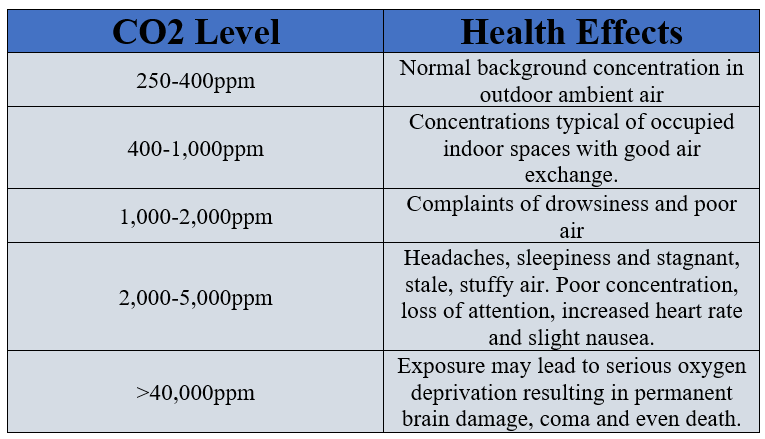Carbon Dioxide-What exactly it is?
Carbon dioxide is a naturally occurring trace gas in Earth’s atmosphere. CO2 is a crucial greenhouse emission liable for global climate change. It’s an odorless, colorless gas at normal temperature and pressure. Although less ample than nitrogen and oxygen within the earth’s atmosphere, it’s a crucial constituent of our planet’s air. CO2 is formed from one carbon atom and two oxygen atoms.
Carbon dioxide is the fourth most rich component of dry air. It has a concentration of about 400ppmv (parts per million by volume) in Earth’s atmosphere. Scientists analyze that before human industrialization, CO2 concentration was around 270 ppmv.

Why CO2 is important?
Carbon dioxide is an essential greenhouse fuel that permits us to seize warmth in our atmosphere. Without it, our planet might be inhospitably cold. However, gradual growth in CO2 concentrations in Earth’s ecosystem is supporting to force global warming, threatening to disrupt our planet’s climate as average global temperatures steadily rise.
Carbon dioxide is a gas consisting of one-part carbon and two parts of oxygen. It is one of the foremost crucial gases in the world because trees use it to produce carbohydrates in a process called photosynthesis. Because humans and animals depend on plants for food, photosynthesis is necessary for the survival of life on earth. Also, it supports the world to carry the energy that it receives from the so it doesn’t all escape back to space.
Photosynthesis Process
It is a process employed by the plants and other organisms to convert light energy into energy which will later is released to fuel the organism’s activity.

Where does CO2 come from?
Carbon Dioxide Emissions: Human Sources
Starting from the day of the Industrial Revolution, human sources of carbon dioxide emissions have been growing. Human activities which include the burning of oil, coal, and gas as well as deforestation, are the primary purpose of the accelerated carbon dioxide concentrations within the atmosphere.
The study says, 87 percent of all human-produced carbon dioxide emissions come from the burning of fossil fuels like coal, natural gas, and oil. The rest results from the clearing of forests and other land-use changes (9%), as well as some industrial processes like cement manufacturing (4%)
Source: https://www.che-project.eu/news/main-sources-carbon-dioxide-emissions
Around 84% of all anthropogenic (man-made) CO2 emissions are created in electricity and heat production, agriculture, industry, and transport.
In 2016, China was by far the biggest producer of CO2 with about 10 billion tons. Behind China was the USA with approx. 5.3 billion tons of CO2, the EU with approx. 3.5 billion and India with approx. 2.4 billion. Germany holds 6th place with 0.8 billion tons of CO2 for the year 2016. Switzerland holds 71st place with 38 million tons of CO2 per year.
However, in addition to the cumulative emission quantity, there is also the possibility of linking emissions to the number of inhabitants. With 48 tons of CO2 per capita, Qatar is at the top of the list. Germany’s per capita emissions in 2016 were around 9.8 tonnes per inhabitant. Switzerland generates approx. 5 tons of CO2 emissions per capita. To provide a comparison, the 2014 IPCC report suggests emissions of 1 to 2 metric tons of CO2 per capita per year if climate change is to be brought under control at least to a certain extent. Other modes of measurement can produce different national average CO2 emissions, however. For instance, CO2 emissions caused by imported goods are often not included.
Sources:https://www.ipcc.ch/site/assets/uploads/2018/05/SYR_AR5_FINAL_full_wcover.pdf( Global Carbon Atlas 2017; IPCC 2014 Assessment Report 5; IPCC 2014 Synthesis Report )
Sources of Atmospheric CO2
Atmospheric carbon dioxide arises from a mixture of herbal and manmade sources. Nature tends to balance-out resources of carbon dioxide via the carbon cycle and carbon sinks, however, human sources of outdoor carbon dioxide disrupted this sensitive balance. Common evolution of atmospheric carbon dioxide include:
- Industrial processes, such as refineries, chemical production, and cement factories
- Electricity production, especially coal-operated power plants
- Vehicular transportation, such as cars, trucks, and airplanes, etc.
Sources of Indoor CO2
While all assets of CO2, in the long run, end up within the environment or ocean, there are unique emissions that impact us interior buildings. Here are a couple of resources we should always hold in mind.
- Our body: One of the most important sources of indoor carbon dioxide is actually our bodies. As we breathe, each one of our body’s cells takes in oxygen to finish a process called cellular respiration. During this series of chemical reactions, our body produces carbon dioxide, which releases it when we exhale. Typically, this carbon dioxide would scatter into the air, but in closed rooms and houses the CO2 has nowhere to go.
- Poor ventilation: Many homes today are constructed to save energy. For this reason, they are tightly sealed and entice CO2, letting it build up to unhealthy levels.
- Home cooking: Any sort of fire in your property will produce carbon dioxide. Burning of gas or timber stove, fireplace, smoke or burning of candles inside the house will produce CO2.
What are the effects of CO2?
High levels are directly correlated to low productiveness and high unwell depart making this a critical subject in offices, facilities, and residential environments.


Source: https://www.online-sciences.com/earth-and-motion/what-are-the-disadvantages-of-carbon-dioxide/
At Home:
Fresh air will assist you to urge a much better night’s sleep. Keep your door or window open at an equivalent time as you sleep to keep away that “stale” air feeling, which comes from improved stages of CO2.
At School or inside the office:
Studies show that citizenry has a far harder time learning, performing easy and sophisticated tasks, and making decisions, as CO2 levels rise.
What do my CO2 levels mean?
How to measure CO2 levels?
Carbon dioxide levels are measured as PPM(parts per million). In the past CO2 concentration was often measured within the laboratory by grabbing samples from the air near the earth’s surface. These measurements used mixtures of carbon dioxide and nitrogen for calibration standards and accuracy of ±0.2 ppm was achieved. Currently with the development of technologies another principle “NDIR(Non-dispersive infrared)” has come to the image. As we are using this NDIR sensor inside our air monitoring device I am explaining this about this briefly.
How does an NDIR CO2 Sensor Work?
NDIR is an industry term for “nondispersive infrared”, and is the commonest type of sensor used to measure carbon dioxide or CO2.
An infrared (IR) lamp directs waves of light through a tube crammed with a sample of air toward an optical filter ahead of an IR light detector. The IR light detector measures the quantity of IR light that passes through the optical filter.
The 4.2-micron band of IR radiation produced by the lamp is extremely on the brink of the 4.26-micron absorption band of CO2. Because the IR spectrum of CO2 is exclusive, matching the light source wavelength serves as a signature or “fingerprint” to spot the CO2 molecule.
As the IR light passes through the length of the tube, the CO2 gas molecules absorb the specific band of IR light while letting other wavelengths of light pass through. At the detector end, the remaining light hits an optical filter that absorbs every wavelength of light except the 4.2-micron wavelength absorbed by CO2 molecules in the air sample tube.
Finally, an IR detector reads the remaining amount of 4.2-micron light that was not absorbed by the CO2 molecules or the optical filter.
How is the CO2 concentration calculated?
The difference between the amount of light radiated by the IR lamp and therefore the amount of IR light received by the detector is measured. Since the difference is the result of the light being absorbed by the CO2 molecules in the air inside the tube, it is directly proportional to the number of CO2 molecules in the air sample tube.
All measurements start out as analog milli-voltages. While some sensors output this as an analog voltage or 4-20 mA signal, some also include an analog to digital converter(ADC) on the sensor PCB that converts the voltages into serial(UART, RS232) or RS-485 output. Serial output is particularly useful for using NDIR CO2 sensors with Arduino or Raspberry Pi microcontrollers.
Applications of CO2 Sensor
Some of the major applications of Carbon dioxide sensor include the following:
- These are often used for HVAC applications to monitor the quality of air.
- It is used to monitor fermentation, aerobic respiration, photosynthesis and some of the other consuming or producing process which uses carbon dioxide.
- Another application is monitoring and detecting CO2 levels in cell incubators to manage ideal cell and tissue growth.
- Aerospace applications utilize CO2 sensors specifically to monitor for inflight conditions and air quality maintenance for the crew and overall passengers.
At Ambee we use CO2 sensor inside our Portable Indoor Air Quality monitor which helps our customers to better understand the levels of CO2 present in ambient air and take better decisions. I even have provided the link from where you can procure one for yourself or a beloved.
https://shop.getambee.com/products/ambee-air-monitor
https://www.amazon.in/Ambee-Air-Quality-Monitor/dp/B07RPF9V63






